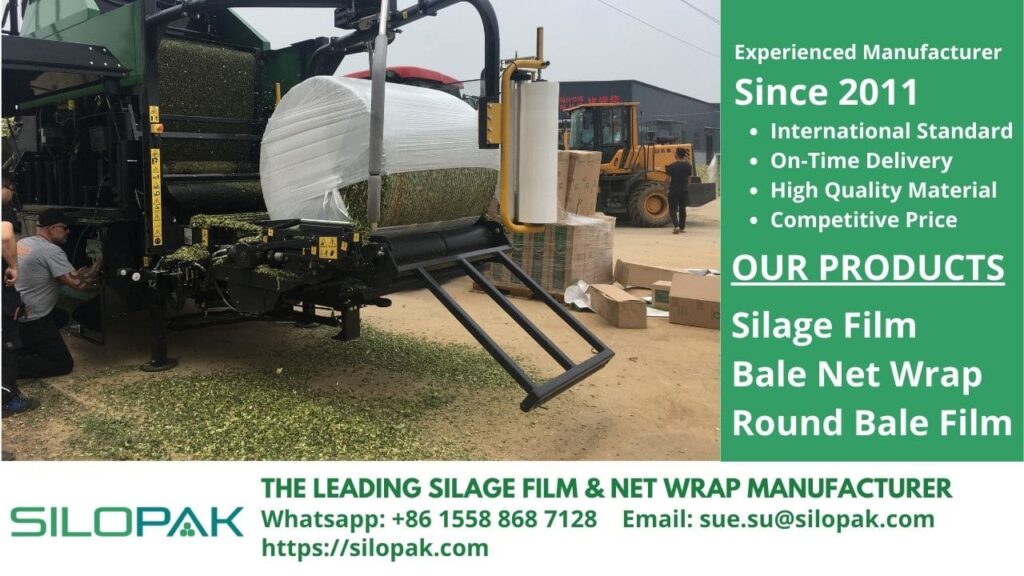Conserving Green Fodder: Advantages and Concerns

The importance of conserving green fodder is only felt by farmers rearing animals at their farms. Fodder of this kind is unique compared to other kinds as they are harvested and fed to the animals right away while they are still fresh. If they are left untreated without being consumed by the animals, they will spoil.
Turning into a pile of garbage, this green material can be the source of a string of unwanted outcomes. That’s why you need to conserve them so that they can still be used as a nutritional source of food to give to the animals.
There are two common ways to use to conserve green plant materials: Silage and hay. Both methods of conserving green fodder require careful management and maintenance to stop them from going unviable to be used as livestock feed. One may argue that one should not go this far just to make sure that the feed for one’s animals stays fresh and healthy. But there are some benefits to expect from the particular act of fodder conservation. Let’s take a look at those benefits.
What to Expect
You can expect the following from conserving green fodder:
- Year-Round Feed Availability
By conserving the plant materials, you can still have a supply of feed to give to the animals even during a time when other resources start depleting. This is especially true when it comes to the colder months of the year. During this period, plants naturally halt their growth, making fresh resources of food scarce.
The animals can’t graze the land on their own. You can’t plant and harvest the plants to produce feed for them. You wouldn’t need to worry about leaving your animals starving by conserving the materials beforehand.
- Dependable Shelf-Life
Fermentation is one way of conserving plant materials. By fermenting them, the materials can be maintained for their succulent property, and they will remain edible for a long time.
- Maintained Nutritional Quality
By conserving green fodder, you are preserving at least 85% of the value of the crop. Feeding green fodder right away is beneficial in that it ensures the nutrients are delivered to the animals’ system without a reduced percentage.
But there will be moments when the plants are left untouched, and these remains would lose their nutritional values over time. Preserving them will keep a high level of its nutritional contents for the animals to take advantage of.
- A Way Of Making Use Of What Otherwise Would Into The Trashcan
During or after the rainy season, grass may grow rapidly and immediately. You can make use of this abundance of nutritional food sources by conserving the plants.
The same goes for weeds. By collecting and preserving them, you can produce nutritious feed for the animals.
- Happy Animals
Fodder conservation turns plant materials into feed that is loved by the animals. They will rejoice in the taste, and this will, in turn, make them happy.
- Increase Nutritional Supply
Conserved green feed is rich in both protein and some vitamins, particularly carotene.
- Available Space
Harvesting plants to subsequently conserve them would mean you can have available spots for planting other varieties of plants.
- More Space
By conserving green fodder, you reduce the size of the original materials, making them easier to store.
- Costs Reduced
Fodder preservation negates the need for special requirements such as fencing.
What to Be Aware of
Advantageous as it may be, conserving green fodder requires some points to be taken into account:
- While the general costs can be pressed, fodder conservation gives rise to the costs of feeding methods. It will also require more labor as you will have to fill a particular container with the materials prepared for the preservation.
- You might not need to think about things like fencing requirements, but in place of it, you will have to think about building a special site meant for the preservation processes.
- The feed might have less vitamin D.
- Costs will also increase due to the involvement of preservatives. Meta-b-sulphite and molasses are expensive and are not available at random stores.
- You need to combine the preserved fodder with legumes of high protein content, grass of low protein content, and cereal crops as well.
The act of conserving green fodder requires special wrapping products to keep the content safe and fresh. You can try contacting us at Silopak for further info regarding this product.
